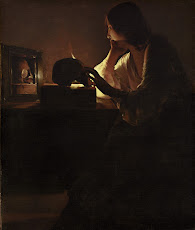Romantic Era - The Clash of Styles: Realism and Post-Impressionism

The Romantic Era The Romantic Era heralds many art styles used by many well-known artists. Among these, the rise of Impressionism, Realism, Pre-Raphael art, and many more styles are seen during this era, making it one of the most significant flourishes of art. In this article I will be covering realism and post-impressionism and the differences between them. Realism Realism appears earlier in the Romantic era and often depicts subjects of ordinary life and individualistic ideals. The evolution of the art of the Classic era into realism can be seen as the realistic depictions track largely through into Realism, however there are key aspects differentiating the two. Reminiscences of 1865 by John Frederick Peto 1904, United States Realism is intuitively named after it's realistic, trompe l'oeil (fool the eye) style, mimicking reality. Realism also however carries with it further hidden meanings in the items depicted usually. beyond this, another distinguishing feature of Realism...


